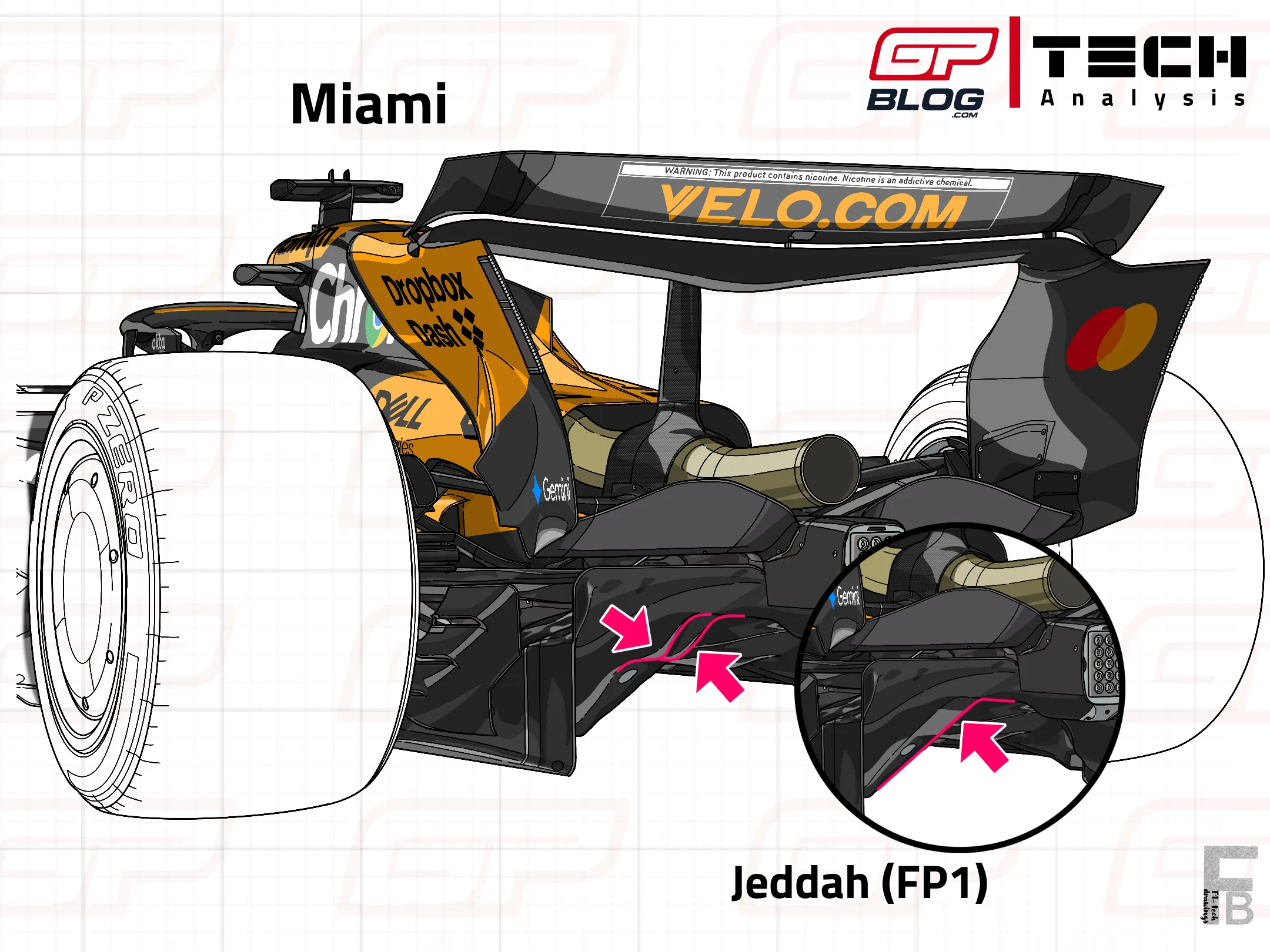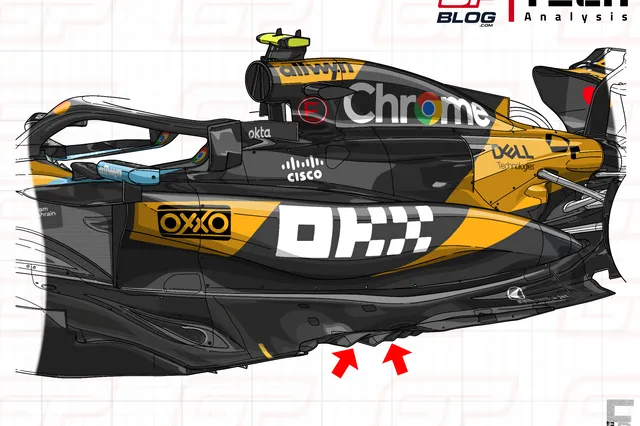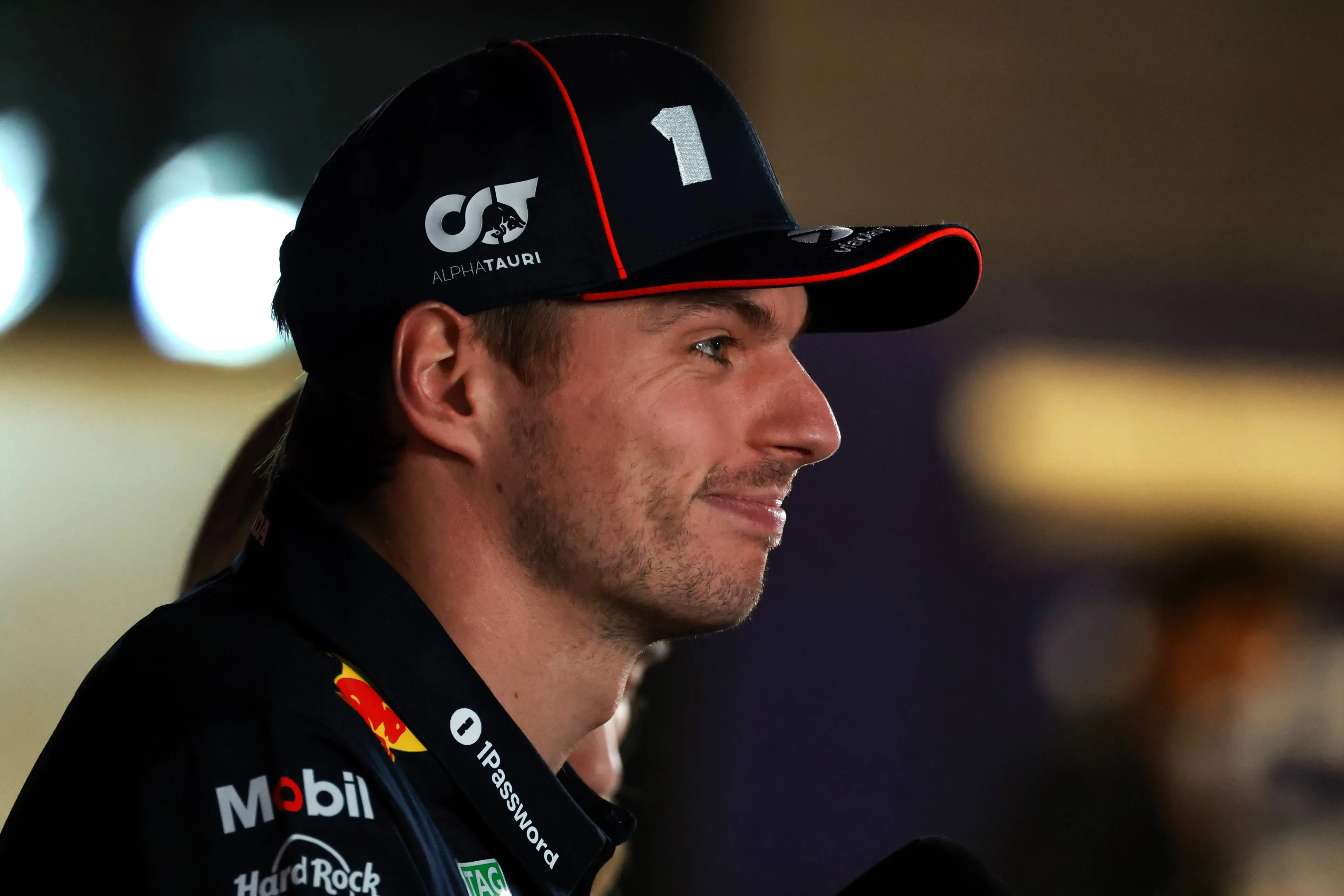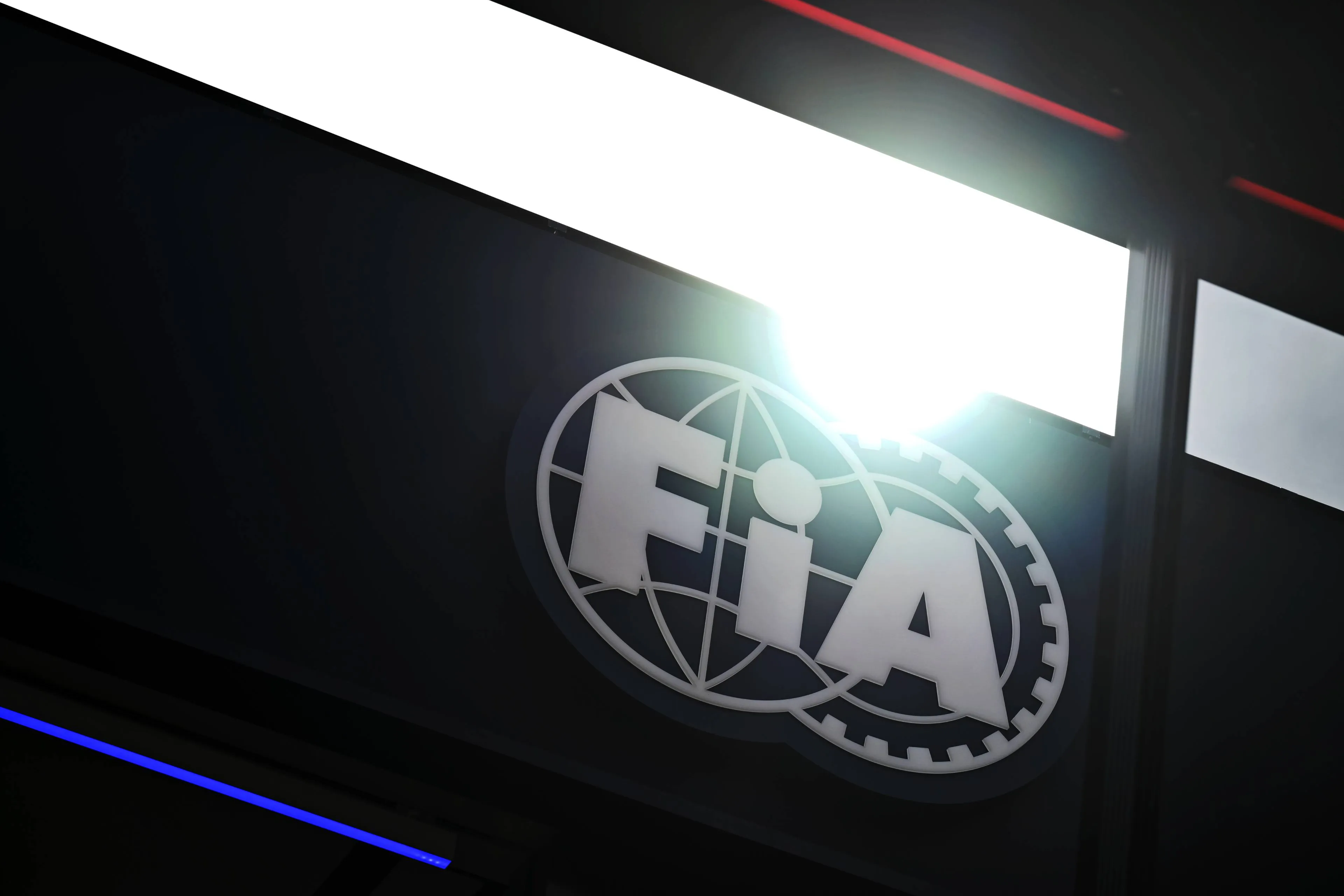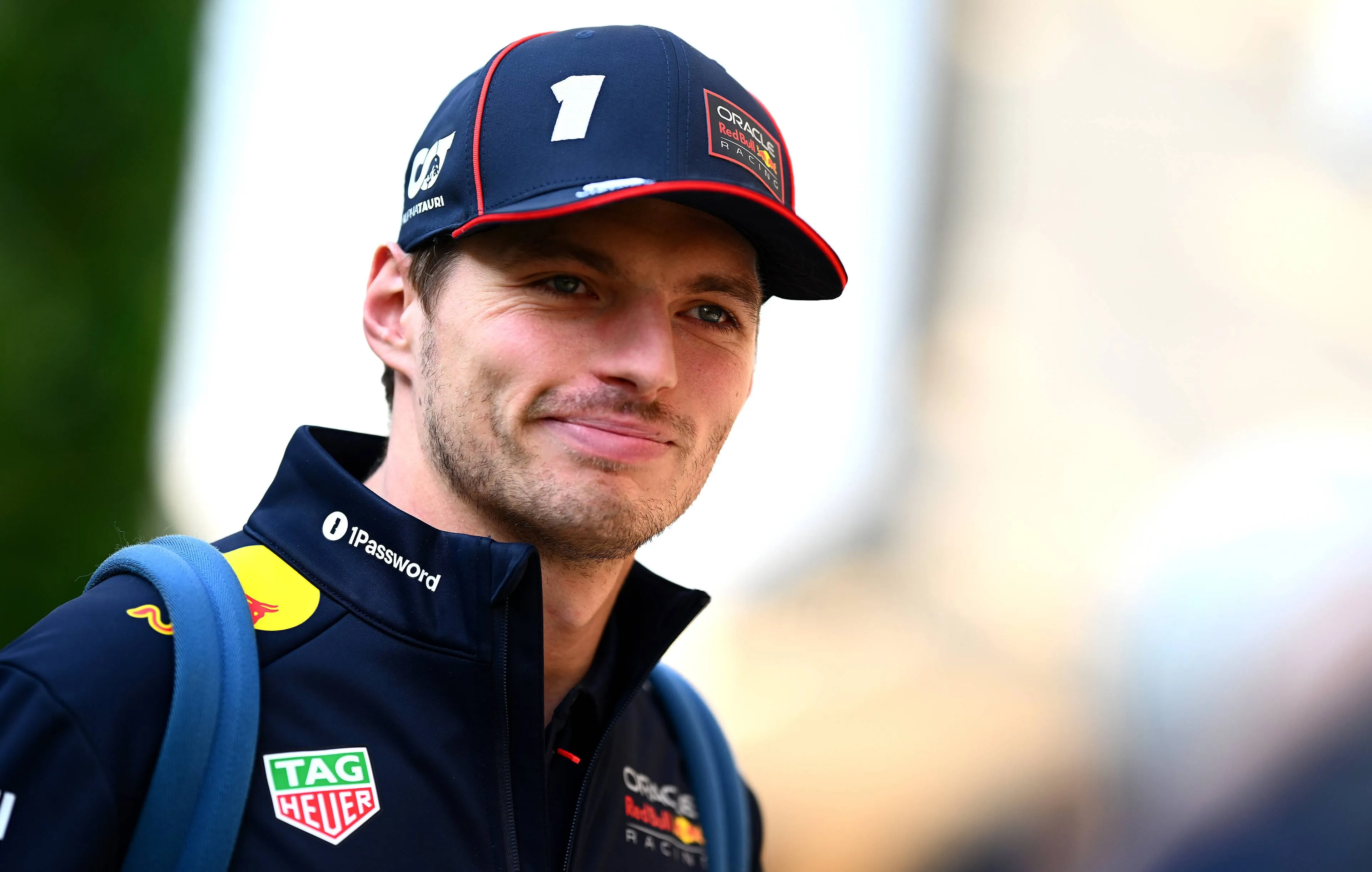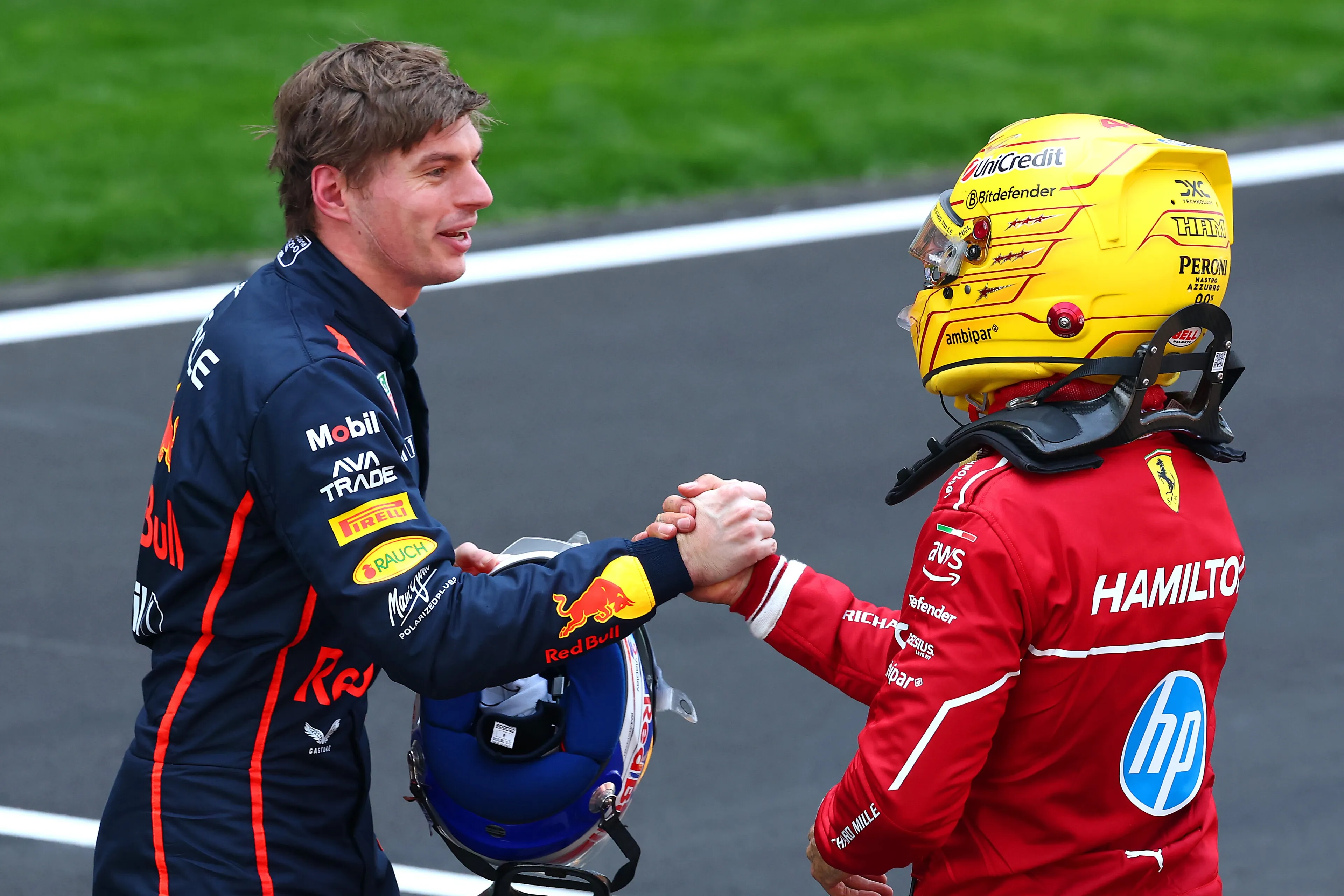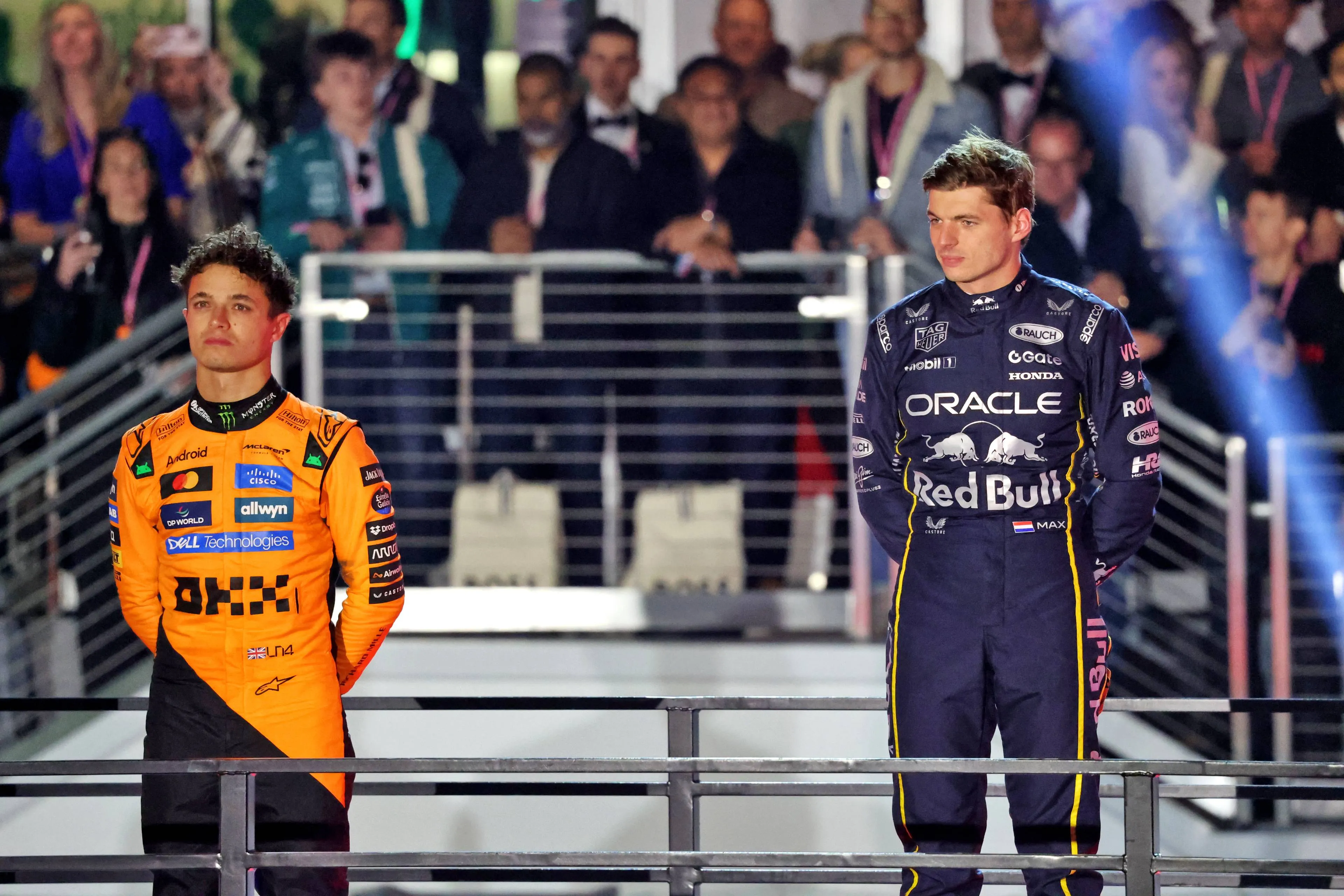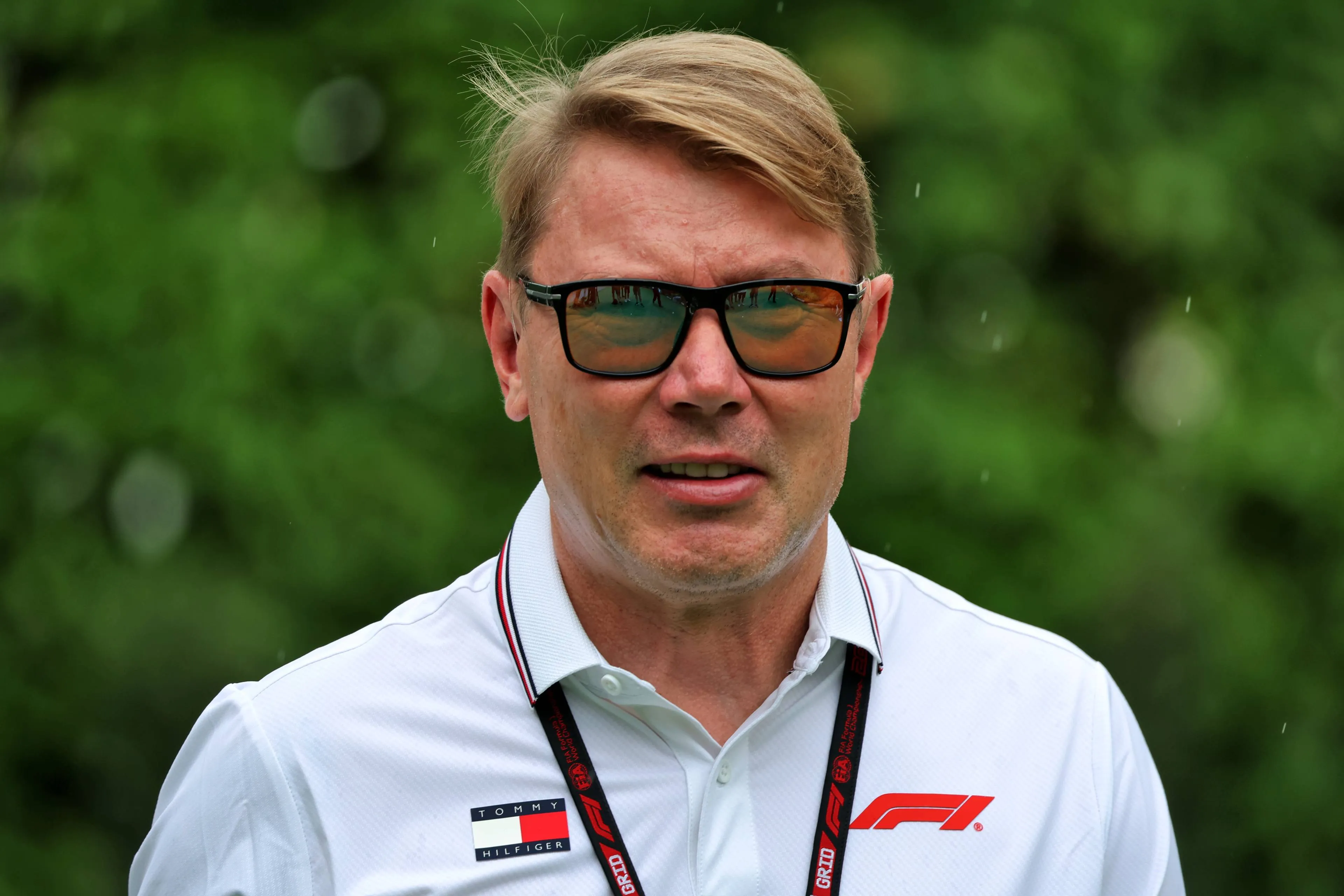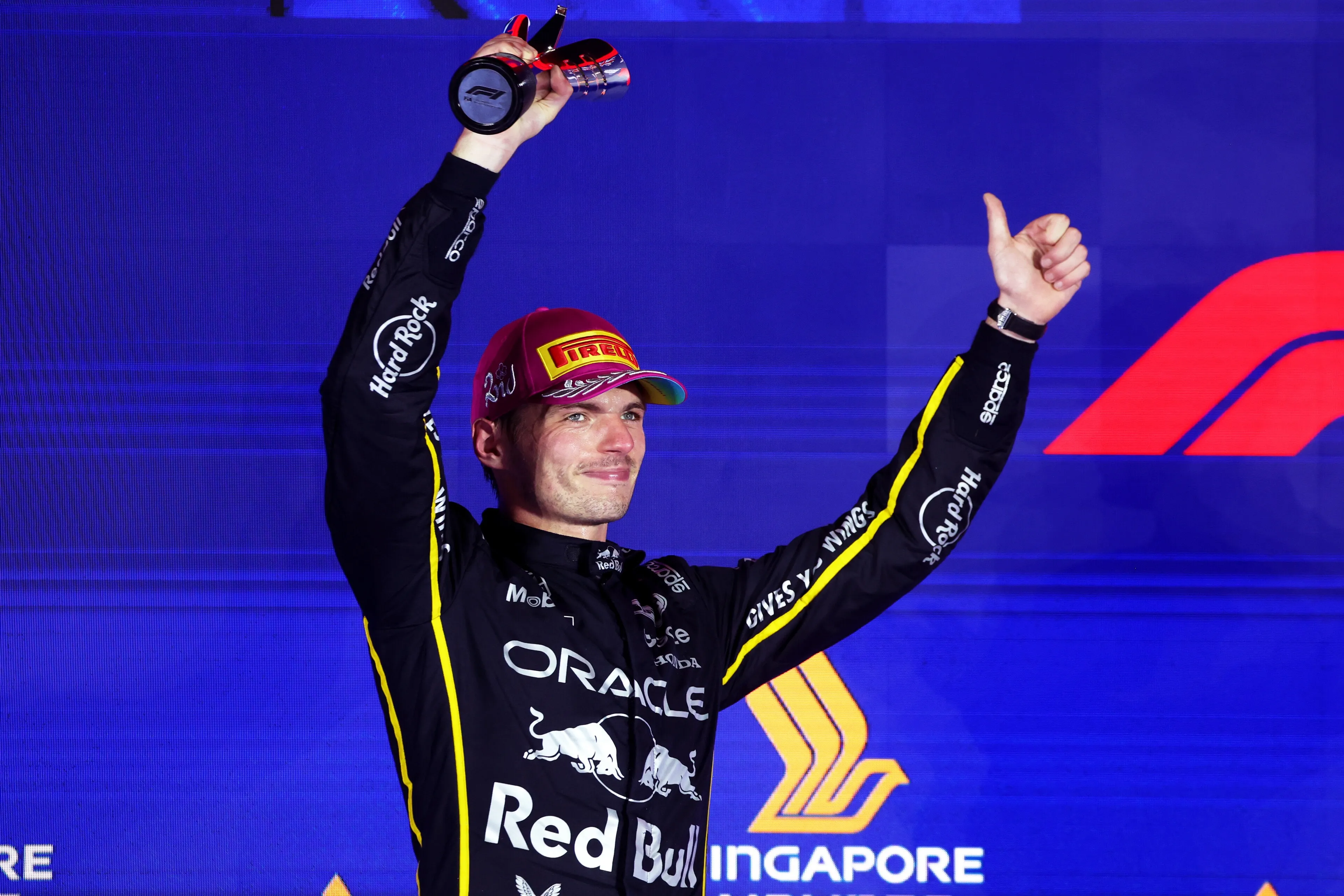F1 Tech | How did McLaren disappear into the distance overnight in Miami?
The Miami Grand Prix weekend saw a very dominant McLaren both in the Sprint race and the Grand Prix on Saturday, despite not being the quickest in both qualifying sessions. The hot temperature and the technical layout of the Miami International Autodrome clearly helped, but where did McLaren’s performance really come from?
McLaren arrived in Miami with no upgrades planned, but it was interesting to catch a very little detail in FP1: because of the single hour practice session, due to the Sprint weekend, the team decided to keep using the “old” diffuser spec, rather than the new version tested during FP1 in Jeddah a couple of weeks ago.
As highlighted in the drawing below, the two versions are characterised by a different ramp design: the version used in Miami (and during the first races of the season) had a ramp with two "bubbles" just below the rear structure (pink lines and arrows). The new version tested in Jeddah instead featured a smooth and straight ramp, with a much simpler shape (pink line and arrow in the circle).
The goal of the Jeddah diffuser design is to improve the efficiency of the diffuser, probably generating a similar amount of downforce but with a reduction in flow losses. This could contribute in a higher load generated by the floor, at the same drag cost.
However, the team probably tested the new diffuser in Saudi Arabia to have a feedback of the work done at the factory directly from the track, even though their intention was not to keep this upgrade on the car for the rest of the weekend.

Despite the “standard” MCL39 version, McLaren immediately looked strong in Miami since FP1: the car was able to produce a huge level of “efficient load” from the Venturi channels, i.e. downforce generated at very low drag cost, being very competitive in the high speed section in the first sector.
This high level of downforce available pushed the team to make another technical choice, which would later prove crucial during the Sprint and the GP: adopt on both cars a softer mechanical set-up (not by accident, it was visible how much bouncing the car had during the race). This made the MCL39 unbeatable in the slow speed complex from turn 11 to turn 16, being on top for the whole weekend.
As a consequence of these two choices, the technical team led by Rob Marshall and Peter Prodromou chose a low downforce rear wing for this weekend. The spec was the same one used in Jeddah and was matched with a single element beam wing, mainly to improve the top speed at the end of Miami’s long straights.

This set-up, however, was a double-edged sword: in qualifying, having a softer set-up made both Norris and Piastri lose crucial lap time in the first sector (the one characterised by high-speed corners) compared to Verstappen, whose stiff RB21 was on rails on that section on the single lap.
On the other hand, the softer mechanical suspension played dividends during the Sprint and the race: the MCL39 was the quickest in every kind of corner and was able to look after the tyres as no other car, without being affected by overheating.
This aspect was particularly evident in the Sprint on the intermediate tyre: as soon as the track dried, the tyre started to degrade and overheat, with McLaren setting lap times way faster than others.
Piastri himself underlined this aspect in the usual interviews after the race, pointing out that: “In qualifying we were not the quickest in the high-speed corners. I think generally in the low-speed corners is where we seemed quite good this weekend. In the race, all the corners become even slower, and looking after the tyres becomes more important.”
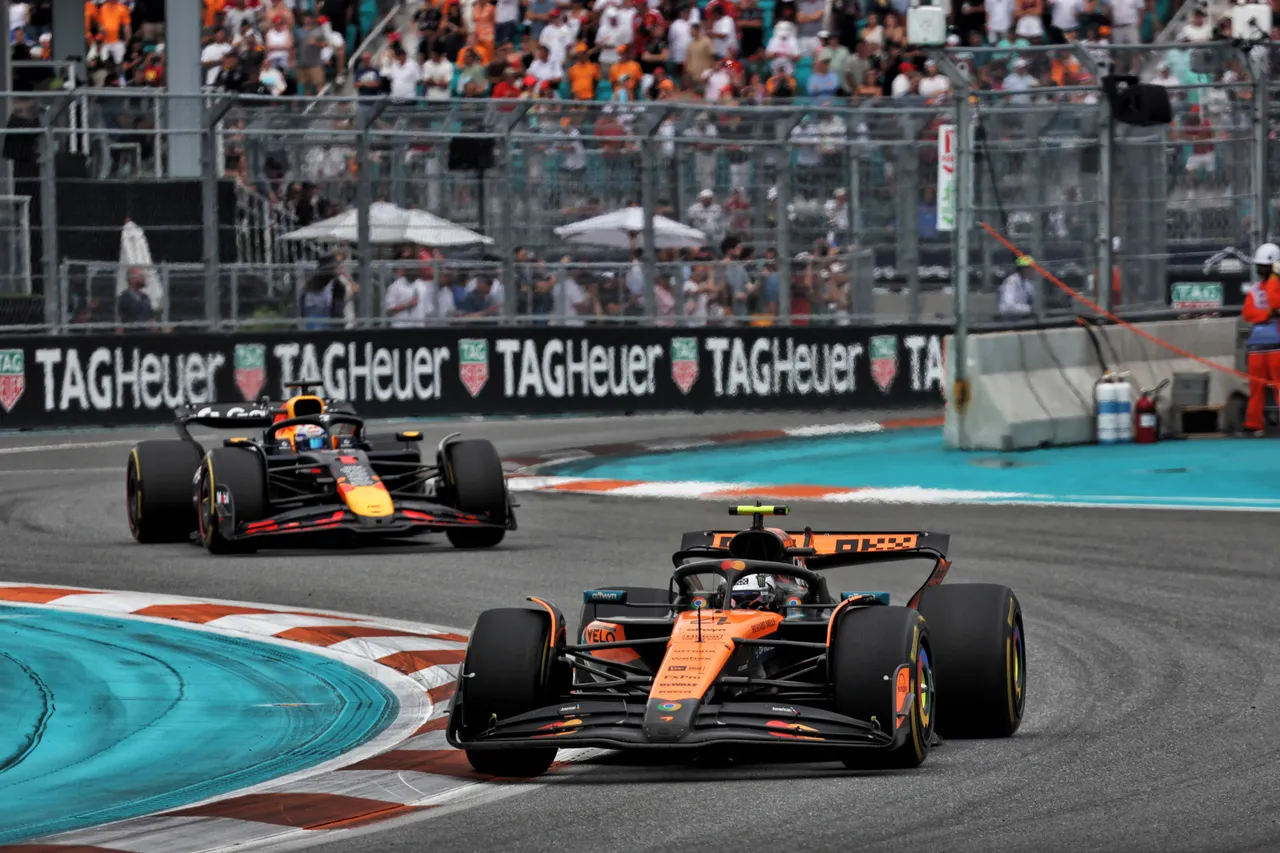
On Sunday another aspect came into play: the hot temperature. Despite the rain that hit the track in the morning, the track was hot, making McLaren’s advantage in tyre management way bigger.
Tyre temperature, in fact, has a negative effect on tyre management, as when the temperature rises, a chemical adhesion between the tyre and the tarmac occurs, increasing the friction and thus the degradation (that’s why in hot races it’s normal to see a lot of “marbles” near to the main trajectory).
All these aspects combined made the MCL39 unbeatable as soon as fuel was loaded on the car. The hot conditions clearly helped, making the Woking team’s race pace advantage even bigger, as underlined by Andrea Stella after the race: “Whenever the conditions are challenging for the tyres in terms of overheating in particular, then the car seems to be doing a good job on keeping the tyres in a very good window and the car is gentle on the tyres.”
Read also
Why Miami's performance was McLaren's target in 2023
Last but not least, the performance seen this weekend is what McLaren have been targeting for the past two years.
The set-up decisions made in Miami reflected McLaren’s technical philosophy at its best: if we look back and listen to some Andrea Stella’s interviews through the since 2023, he always pointed out that the team’s main goal for development was to increase the “efficient load” on the car.
The downforce generated from the Venturi channels, in fact, is the one that least affects drag and, the more you have, the better you can manage the tyres. Focusing on this aspect positively affects the other elements of the car: if the majority of the downforce is generated from the bodywork and Venturi channels, then the team can adopt less loaded rear wings, thus improving their performance on the straights.
Another aspect involved is mechanical balance: the great downforce generated from the floor, allows engineers to adopt softer set-up, improving the performance in slow speed corners without penalising the high speed, where the high level of load produced makes up for the losses caused by softer set-up.
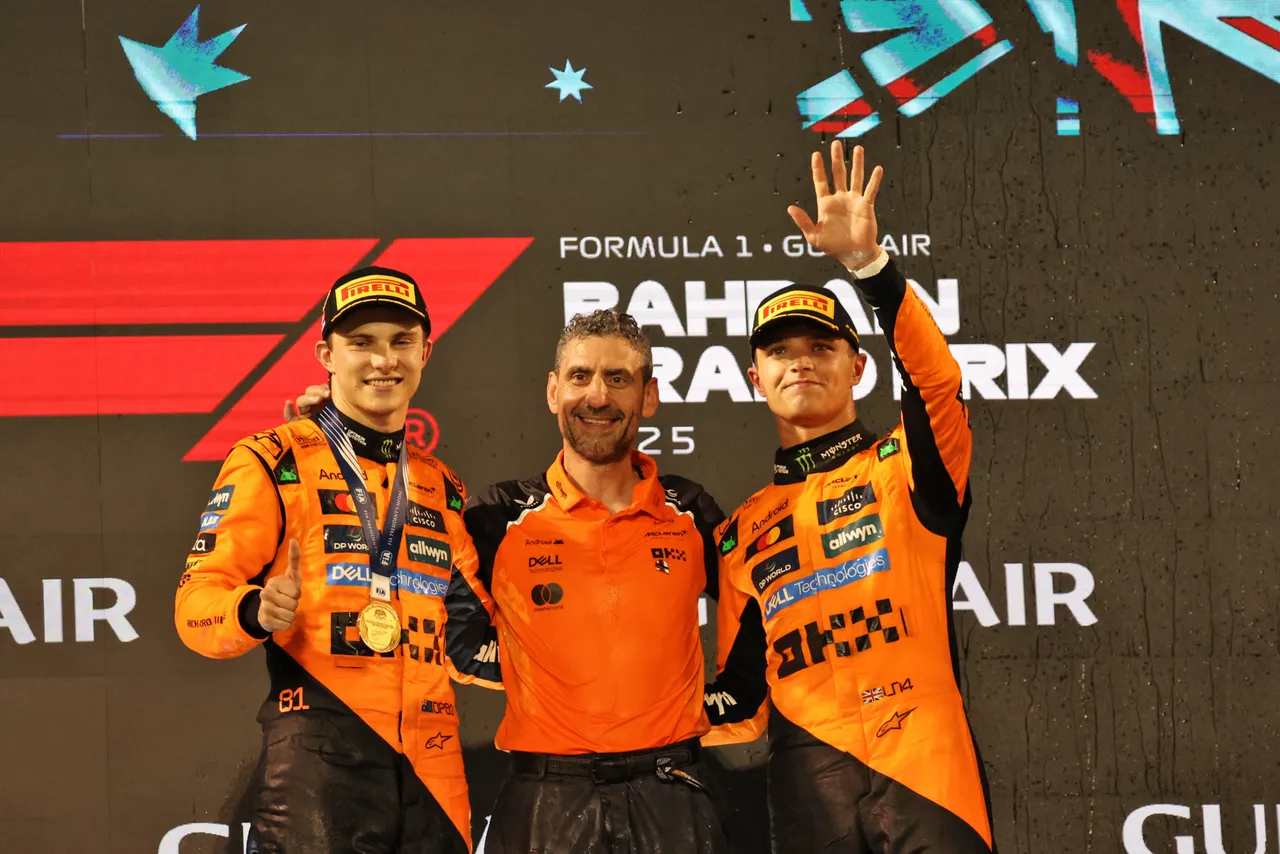
If we look at the bigger picture, this is exactly what’s happening at McLaren this year: the MCL39 is able to produce way more downforce from the Venturi channels than competitors and this allows engineers to adopt softer set-ups which help manage tyres like no other car, while also using lower downforce rear wings to have a good top speed In the straight-line.
All this was proved by races like the Miami, Melbourne and Shanghai: despite the different conditions they faced (in terms of temperature and weather), those layouts were characterised by different kinds of corners and had a big impact on tyre wear. Not by accident, in fact, those were exactly the races where McLaren dominated, proving to have understood these ground effect regulations better than others.
Competitors like Red Bull and Mercedes hope that the FIA Technical Directive set to be introduced at the Spanish Grand Prix may slow McLaren down, but the reality is that, in this situation, it’s the whole package that makes the difference (aero, suspension, engine, chassis…) and not only a flexible front wing.
Popular on GPBlog
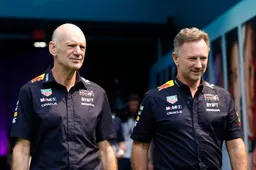
Aston Martin has informed staff following rumors about Horner’s arrival

What Norris needs to do to clinch his first drivers' title in Qatar GP

F1 Drivers' Standings | Piastri closes the gap with Sprint win in Qatar

